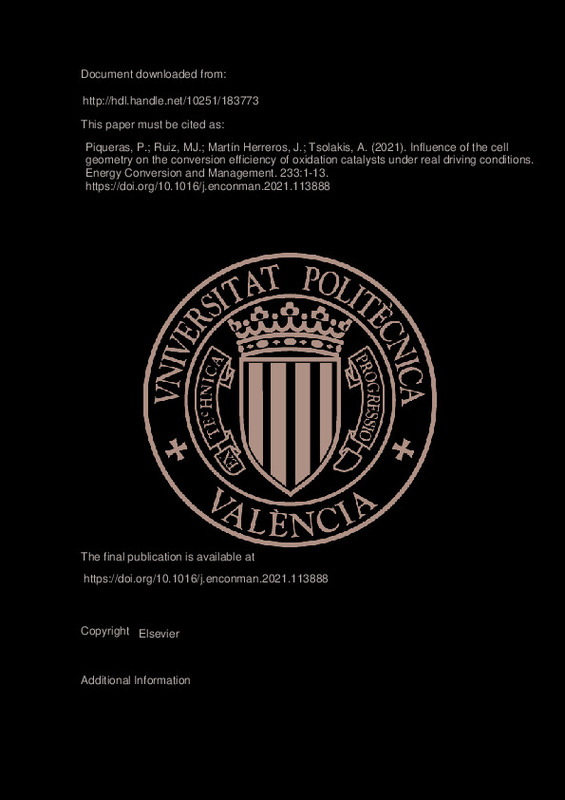JavaScript is disabled for your browser. Some features of this site may not work without it.
Buscar en RiuNet
Listar
Mi cuenta
Estadísticas
Ayuda RiuNet
Admin. UPV
Influence of the cell geometry on the conversion efficiency of oxidation catalysts under real driving conditions
Mostrar el registro completo del ítem
Piqueras, P.; Ruiz, MJ.; Martín Herreros, J.; Tsolakis, A. (2021). Influence of the cell geometry on the conversion efficiency of oxidation catalysts under real driving conditions. Energy Conversion and Management. 233:1-13. https://doi.org/10.1016/j.enconman.2021.113888
Por favor, use este identificador para citar o enlazar este ítem: http://hdl.handle.net/10251/183773
Ficheros en el ítem
Metadatos del ítem
| Título: | Influence of the cell geometry on the conversion efficiency of oxidation catalysts under real driving conditions | |
| Autor: | Ruiz, María José Martín Herreros, José Tsolakis, Athanasios | |
| Entidad UPV: |
|
|
| Fecha difusión: |
|
|
| Resumen: |
[EN] Worldwide pollutant regulations applied to the transportation sector are progressively tightening the emission limits and widening the operating conditions of the type approval tests. As a result, the layout and thermal ...[+]
|
|
| Palabras clave: |
|
|
| Derechos de uso: | Reconocimiento - No comercial - Sin obra derivada (by-nc-nd) | |
| Fuente: |
|
|
| DOI: |
|
|
| Editorial: |
|
|
| Versión del editor: | https://doi.org/10.1016/j.enconman.2021.113888 | |
| Código del Proyecto: |
|
|
| Agradecimientos: |
The authors acknowledge FEDER and Spanish Ministerio de Economia y Competitividad for partially supporting this research through project TRA2016-79185-R. Additionally, the Ph.D. student Maria Jose Ruiz has been funded by ...[+]
|
|
| Tipo: |
|







![[Cerrado]](/themes/UPV/images/candado.png)


